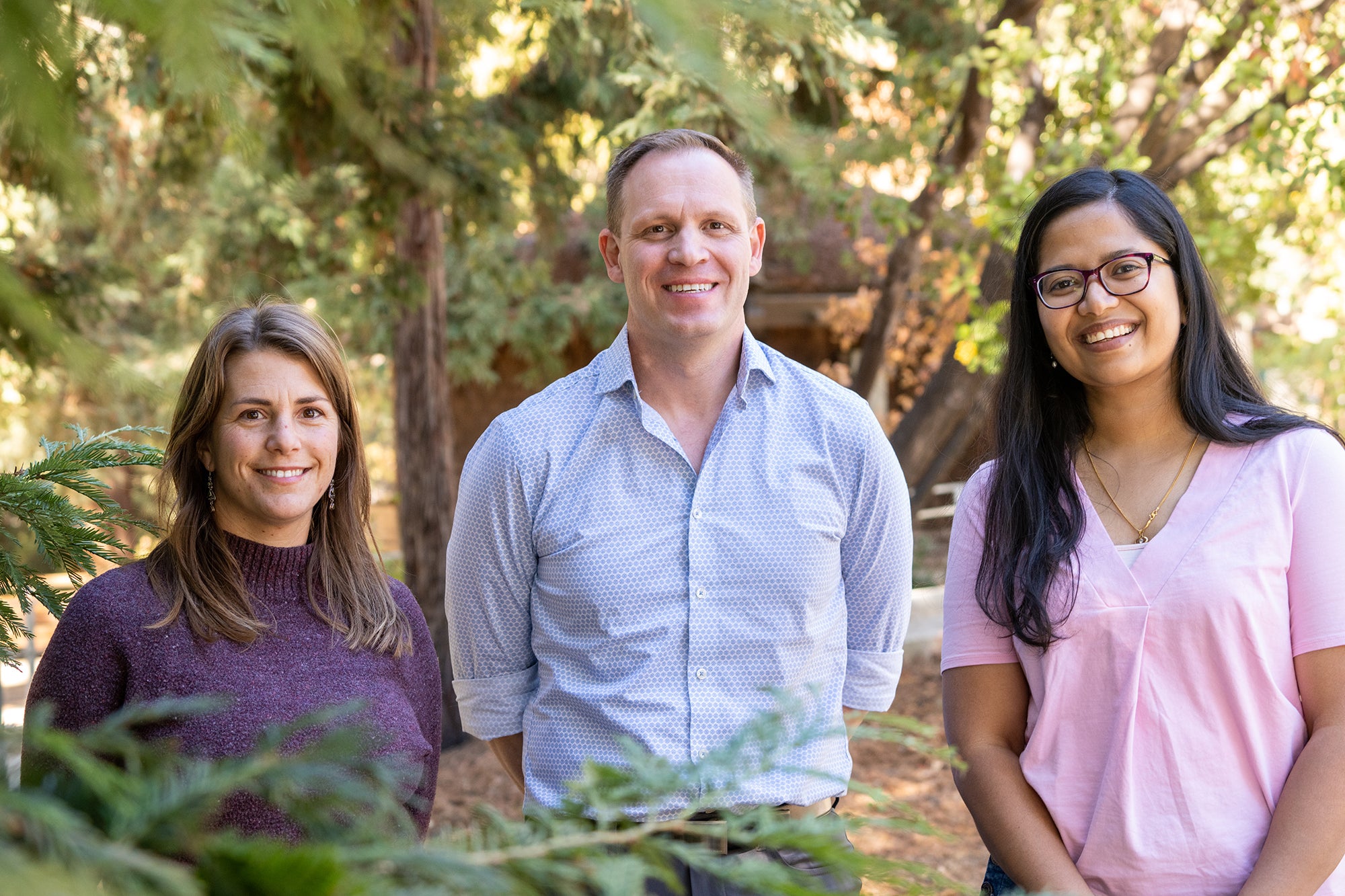Each year, nearly 30 million Americans purchase a real tree for the holidays. Growing the perfect Christmas tree takes about seven years, during which farmers need to keep insects, fungal pathogens and hungry deer at bay. While researchers suspect the distinctive piney smell the trees emit plays a role in deterring these pests, not all trees smell the same, and which chemical blends confer resistance is unclear.
Philipp Zerbe, a UC Davis professor of plant biology, and his team are working to uncover the optimal combination of scent molecules that will deter pests and provide the traditional fragrance consumers expect. Ultimately, the project aims to help breeders improve the trees’ traits and hardiness.
“Through this project, we hope to give the breeders trees that are more resistant to herbivores and microbial disease, and also trees that people really enjoy having in their homes,” said Zerbe.
Why plants smell the way they do
Zerbe’s lab is focused on understanding how plants use chemicals to interact with their environment and defend themselves against threats. In particular, they study a group of chemicals called terpenes, which have many functions including attracting pollinators and warding off herbivores and pathogens. Many terpenes have distinctive aromas and are the building blocks of perfumes.
“My lab’s goal is to understand the chemical and functional diversity of terpenes across different plant species and how they function in plant growth and defense, and to then use that knowledge to improve the resilience of crops,” Zerbe said.

Genetics the key to speedier plant breeding
The holiday tree industry is worth more than $2.5 billion. Like most crops, it suffers losses from disease, herbivores and drought. Selective breeding is the traditional method is to improve crop resistance, but it takes these trees 25 to 30 years to complete a single breeding cycle. By identifying the key chemicals and genes involved, Zerbe’s team aims to speed up this process.
“Unlike most other crops, conifers grow very slowly and have a very long regeneration cycle,” said Zerbe. “If we can use genetic and genomic knowledge to reduce the breeding process to 10 years, that would be incredibly helpful to the industry.”
To do this, the researchers first used chemistry techniques to compare the terpene profiles of different trees. Though many different species of conifer are sold during the holiday season, the researchers are beginning by studying the Fraser fir (Abies fraseri), which is native to the Appalachian Mountains in the Southeastern United States and accounts for around 40% of U.S. holiday season tree sales.
Now, the team is working to characterize the genes and molecular pathways involved in synthesizing different terpenes.
“If we’re going to breed Christmas trees to have varying aroma compounds, we need to know which genes and enzymes are involved in producing those chemicals,” said doctoral candidate Gabrielle Wyatt, who works in Zerbe’s lab. “When we analyze the samples, it always smells like Christmas trees in our lab.”
From chemistry lab to consumer panels
Once they understand how the trees produce their diverse aromas, the researchers plan to test how well these different aromas deter deer and other pests. They’re also using consumer panels to test which aroma combination is most pleasing to humans.
“The breeders and growers we work with are really interested in understanding the intersection between consumer preference and defense,” said Wyatt.
The project is part of a large collaboration led by the North Carolina State Christmas Tree Genetics Program, which recently received $7.5M in USDA funding, of which Zerbe’s portion is just under $700,000. The collaboration involves 11 different research groups whose expertise spans plant pathology, entomology, genomics and the social sciences.
Could holiday trees be upcycled?
Down the road, the team also plan to investigate whether trees could be “upcycled” to the perfume industry after the holiday season winds down.
“Terpenes are really valuable ingredients in the fragrance industry,” said Zerbe. “We hope to develop cost effective methods for extracting those chemicals from old Christmas trees, which would be both increase their availability and reduce the industry’s environmental footprint.”
Media Resources
North Carolina State Christmas Tree Genetics Program
Media Contacts
- Philip Zerbe, Plant Biology, pzerbe@ucdavis.edu
- Andy Fell, News and Media Relations, 530-304-8888, ahfell@ucdavis.edu
Liana Wait is a freelance science writer based in Philadelphia.
